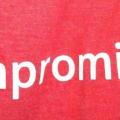The widespread concern over Bill C-11 has largely focused on the potential CRTC regulation of user content. Despite repeated assurances from the government that “users are out, platforms are in”, the reality is that the bill kept the door open to regulating such content. The language in the bill is clear: Section 4.2 grants the CRTC the power to establish regulations on programs (which includes audio and audiovisual content by users). The provision identifies three considerations for the Commission, most notably if the program “directly or indirectly generates revenues.” The revenue generation provision is what led many digital creators to argue they were caught by the bill and for TikTok to conclude that any video with music would also fall within the ambit of the legislation.
The Senate Standing Committee on Transport and Communications, which has conducted months of hearings on Bill C-11, was clearly convinced that the user content issue needed to be addressed. Last night (hours after the ill-advised addition of age verification to the bill), it agreed on an amendment that, with two key caveats, goes a long way to scoping out user content regulation. The new Section 4.2.2, proposed by Senators Miville-Dechêne and Simons, removes the revenue generation test. Instead, the provision now states:
(2) In making regulations under subsection (1), the Commission shall consider the following matters:
(a) the extent to which a program contains a sound recording that has been assigned a unique identifier under an international standards system;
(b) the fact that the program has been uploaded to an online undertaking that provides a social media service by the owner or the exclusive licensee of the copyright in the sound recording, or an agent of the owner
(c) the fact that the program or a significant part of it has been broadcast by a broadcasting undertaking that
(i) is required to be carried on under a licence, or
(ii) is required to be registered with the Commission but does not provide a social media service.
The goal of the amendment is quite clearly to narrow the CRTC’s regulatory power to sound recordings uploaded to user content platforms and scope out other forms of user content, consistent with the government’s oft-repeated use case that a song that appears on both Youtube and Spotify should be treated in the same manner. Simons indicated the amendment was developed in consultation with TikTok, Youtube, and Quebec independent music producers.
The unique identifier criteria now specifically refers to sounds recordings, which removes the prospect that other content with an identifier (such as podcasts) would be caught the bill. While the broadcast requirement in (c) is largely unchanged, the reference to direct or indirect revenue generation has been removed entirely. Instead, the CRTC is to consider whether the program was uploaded by the copyright owner of the sound recording. In other words, the provision envisions regulation only applying to sound recordings and only those uploaded by the music labels or artists. When combined with a provision that excludes non-commercial user content, the regulatory rules are designed to be limited to sound recordings and exclude user content regulation.
This is an elegant solution that appears to meet the government’s goal of maintaining regulatory powers over sound recordings uploaded to Youtube in Bill C-11 with its stated intent of excluding users. If the CRTC were to limit its regulations to these conditions, the provision would appear to address many of the regulatory concerns. This is unquestionably good news, but comes with two caveats.
First, as currently structured, the CRTC is not strictly bound by these conditions. Rather, it is required to “consider” each of these requirements, but it could choose to consider other criteria as well. A better approach would have been to establish an exclusion provision that excluded all content unless the specific criteria are met. That would appear to be the intent of the amendment, but the Commission retains flexibility to say that it “considered” the criteria and chooses to establish new regulations. Another potential safeguard against such an outcome proposed some senators was to limit the provisions on discoverability so that even if the CRTC asserted the power to regulate, the scope of regulation would be limited. The government indicated its opposition to such proposals, which were rejected at committee.
Second, it is by no means certain that the government will support this change. While it passed on division in committee and was the obvious choice of senators seeking a compromise, Senator Dawson, who has been a lead backer of the bill in the Senate, indicated he remained opposed, stating:
The proposed amendment would create loopholes. I’m repeating what Senator Gold said on earlier amendments today, that the amendment would create loopholes for social media platforms to avoid contributing to Canadian culture, which, as you know, is the objective of the bill.
Senator Simons strongly objected to that characterization:
I just wanted to say briefly in response to Senator Dawson’s concern that if you read our amendment, it specifically includes exactly what you were worried about. We have been very surgical with this amendment. This does not eliminate all of 4.2. It scopes it so that it actually does what the government has told us it wants to do. It makes it very clear that social media users are not included. I know, Senator Dawson, you would like us to take the government at its word, but it is that clause about “directly or indirectly generates revenues” that has concerned so many people. Further, the issue is not that we think individual TikTok makers or YouTube makers are going to be asked to contribute to the system. The question was one of whether they would be captured by discoverability, and this amendment, I believe, limits the degree to which those kinds of users are going to be captured by a discoverability paradigm.
Simons is absolutely right and the “surgical” amendment takes everyone’s position at face value: that the government does not want to target users, that creators support a bill that excludes users but includes platforms, and platforms that they are willing to contribute to the Canadian system. It now falls to the government to live up to its word and accept the amendment.










Dawson’s statement “that the amendment would create loopholes for social media platforms to avoid contributing to Canadian culture” is ignorant on many different levels.
The statement implies that social media platforms provide the content. They don’t. The platforms are just a tool for the users to provide content to each other.
The statement ignores the fact that there are millions of Canadians who post content on social media platforms. Surely, some of this content contributes to Canadian culture or does the Senator feel only CRTC certified Canadian content contributes to Canadian culture.
The statement also ignores the fact that non-Canadian content contributes to Canadian culture. Our food culture has been enriched by foods from Italy, India, Japan, etc. Our musical culture was enriched by jazz, the blues and the British invasion. And our current culture is being enriched by social media content from around the world.
Pingback: Canada Threatens Free Speech within the Guise of Nationalistic Obsessions - CitizenZine
Pingback: Canada Threatens Free Speech within the Guise of Nationalistic Obsessions >
Pingback: Canada Threatens Free Speech within the Guise of Nationalistic Obsessions - Sociorep
Pingback: Canada Threatens Free Speech in the Guise of Nationalistic Obsessions – Libertarian Guide
Pingback: Canada threatens free speech in the guise of nationalistic obsessions - Unites News
I think you should find more information on the websites. It will be of great help to us
How to give? How to coming??? How to offer?i don,t khow????